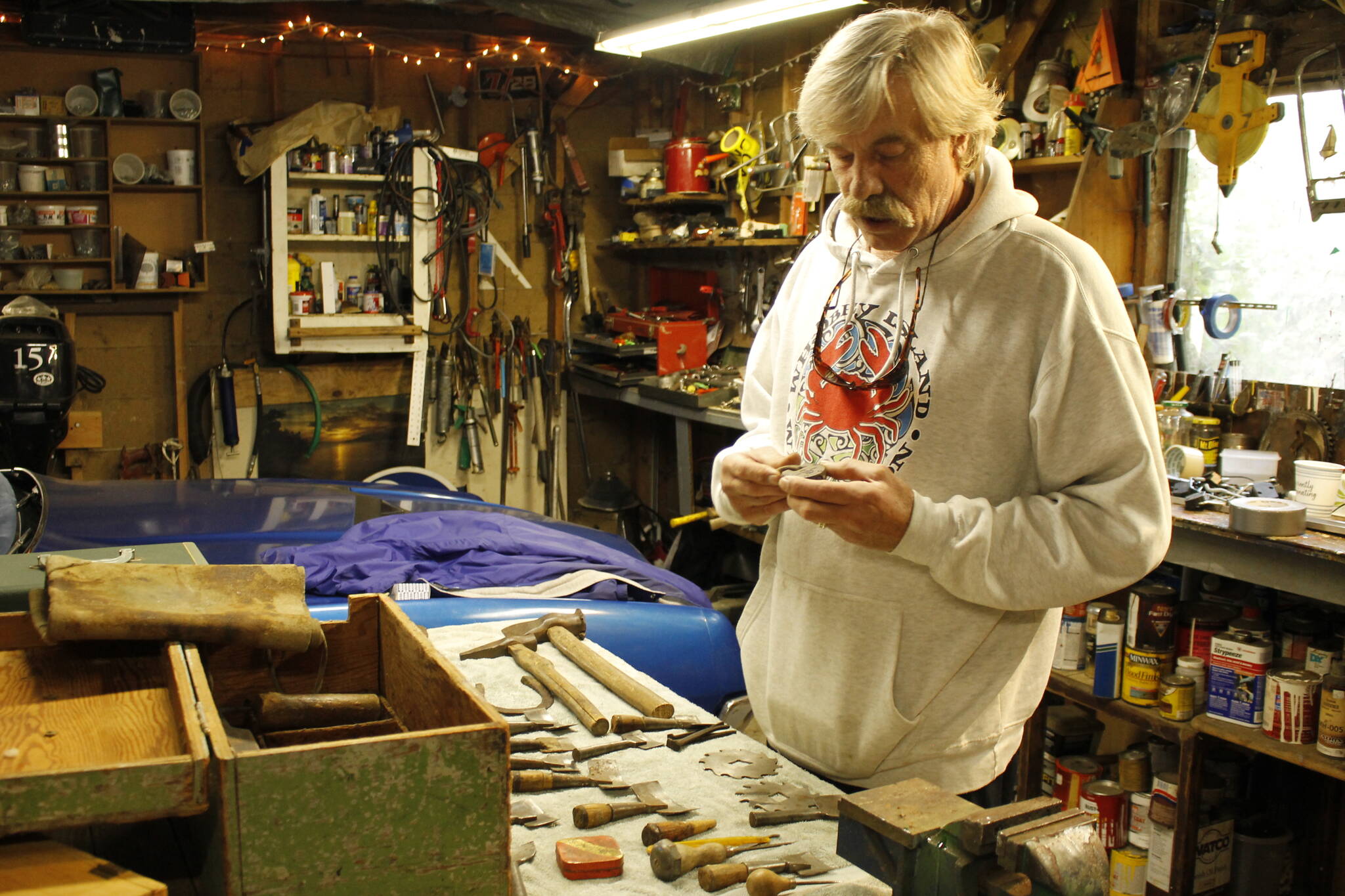Over the years, South Whidbey resident John Norris has found a number of curious items in storage lockers around Whidbey.
His latest discovery may not be as exciting as a human skull or a 17th century cannon — both are former finds — but it is a bona fide piece of Western Washington history that could be over 100 years old.
Recently, while helping a former Clinton resident move out of his home, Norris found a weathered toolbox containing custom-made tools that had been hand-forged for a plywood worker who was employed at a mill in Olympia during the first half of the 20th century.
“It’s a rare find,” Norris said. “It’s something that you’ll never find. He was a special guy who had special-made tools and I rescued it from the dump. That was going to be history gone.”
The worker, Luther Tallent, was born in 1904. When he was a young man, he moved from Tennessee to Olympia. He was a hand patcher at a plywood mill owned by the Washington Veneer Company, which no longer exists today.
According to his son, Luke Tallent, he was responsible for patching any knot or defect that would show up in the plywood. Luther would make a football-shaped patch with the edges of two curved chisels, paste some glue in and add a new piece of plywood to fill the hole.
It was a job that likely became mechanized in the post-World War II era.
“The minute I saw those, being a picker, I’m like, ‘Oh, I need to find out where those belong,’” Norris said of the tools. He procured them from Luke, who was looking to downsize on his possessions as he prepared for his move off the island.
Norris contacted the Olympia Historical Society and is currently in negotiations with members of the society about donating the tools to its museum collection.
Collections Manager Susan Goff said she was able to find records indicating that Luther began working for the Washington Veneer Company in 1940. A few years before that, he worked at a similar operation that ended up being acquired by the Washington Veneer Company.
The Washington Veneer Company was sold to the Georgia-Pacific Corporation in 1948 and all mills owned by it were closed down by 1969. Luther may have been a plywood worker there until the 1950s or 1960s.
“He worked there as long as I could remember, until Georgia-Pacific closed up the plant,” Luke said of his late father, who passed away sometime during the 1980s.
Today, a farmers market occupies the site where the former mill in Olympia once stood.
The Washington Veneer Company was started in 1924 by Ed Westman, who, years earlier, had been successful in starting a rival plywood company by the name of Olympia Veneer Company. He was persuaded to resign from his role at Olympia Veneer Company in order to start the new plywood company.
A couple was married atop the towering Washington Veneer smokestack as a publicity stunt in 1929. A cameraman captured footage of the big event, which can still be viewed today.
Plywood was a desirable material for building homes and fulfilling wartime needs.
The handmade patching tools Luther used were likely either made just for him or were passed down from the plywood worker who did the job before him. The tools contain no maker’s mark and could potentially be over a century old. Norris observed that despite their age, they are still razor-sharp.
“I would imagine at that time that a set of tools would have been pretty expensive,” Luke said.
Later in his career, Luther developed an allergy to the patching glue. He started doing other jobs at the plant, including adjusting the saws.
“He liked working with wood and he liked working with his hands,” Luke said. “Other than that, it was a way to provide for the family.”
Other items in the toolbox include a hammer, a horseshoe and handmade nails a few inches long. The box is affixed with an old lock that has a “S” insignia on it that is eerily similar to the new Seattle Kraken logo.
“It would be a sin to use them for anything else,” Norris said of the tools. “They are worthless in the eye of a new beholder, in 2021. Back in the day, they were priceless.”
Goff expressed excitement about adding the tools to the Olympia Historical Society’s museum collection. The society is currently in the process of establishing a museum location to display the tools, alongside other artifacts that tell the industrial history of the state’s capital.
Luther Tallent’s plywood tools will be the first of their kind in the new museum.
“There are families who don’t think about sharing this wonderful wealth of information of things,” she said. “It’s really great.”
Luke agreed that he thought a museum would be a fitting final resting place for his father’s tools.
“Maybe I’ll get down there someday to see it,” the octogenarian said.



